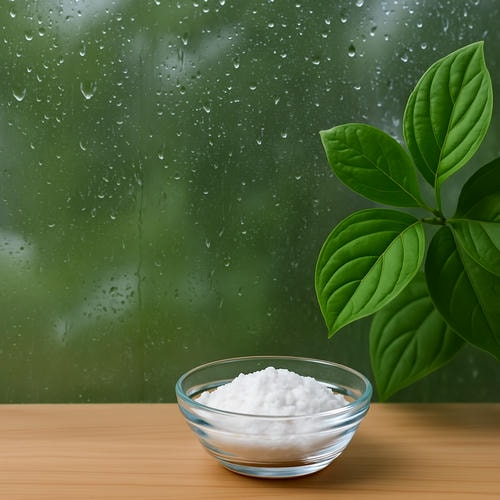Simple, Natural Ways to Keep Your Home Fresh and Dry
Too much humidity in your home can make it feel hot, sticky, and uncomfortable. Even worse, high indoor humidity can lead to mold, mildew, dust mites, and musty smells. While using a dehumidifier is a popular solution, not everyone wants to rely on machines or increase their electricity bill.
Luckily, there are several natural and budget-friendly ways to reduce humidity at home — and many of them are easier than you might think!
Let’s explore how to bring down moisture levels naturally and keep your home dry, healthy, and comfortable.
Why Reducing Humidity Matters
Before we dive into solutions, it’s helpful to understand why excess humidity is a problem.
When humidity levels in your home are too high (above 60%), you may notice:
- Condensation on windows
- A musty smell in the air
- Mold spots on walls or ceilings
- Allergy or asthma symptoms
- Warped wood or peeling paint
The ideal indoor humidity level is between 30% and 50%. Anything above that, especially during summer or in damp spaces like basements and bathrooms, can cause damage to your home and affect your health.
Now, here are the best natural ways to reduce humidity — no dehumidifier needed.
1. Open the Windows (When Weather Allows)
One of the simplest ways to let excess moisture escape is to ventilate your home. Fresh air helps dry out indoor spaces, especially when outdoor humidity is lower than inside.
Tips:
- Open windows during the coolest parts of the day, usually early morning or late evening.
- Use cross-ventilation: open windows on opposite sides of the house to let air flow through.
Note: Don’t open windows on very humid or rainy days — it could make things worse.
2. Use Exhaust Fans Effectively
Most kitchens and bathrooms have exhaust fans, but they’re often underused.
Run your exhaust fan:
- While cooking and for 10–15 minutes after
- During and after showers
- In laundry rooms if you have one
If you don’t have an exhaust fan, crack a window or leave the door open to let steam escape.
3. Take Cooler, Shorter Showers
Hot showers produce a lot of steam — which adds humidity to your bathroom and nearby rooms. You don’t have to give up your relaxing shower, but a few small changes can help:
- Switch to lukewarm water
- Take shorter showers
- Leave the door or window open if possible
These steps reduce steam buildup and help your bathroom dry out faster.
4. Dry Laundry Outside When Possible
Air-drying clothes indoors is energy efficient, but it also releases a lot of moisture into the air.
Natural fix: Hang your clothes outside on a clothesline or balcony. If you must dry them indoors, choose a well-ventilated room and open a window while doing so.
5. Use Moisture-Absorbing Houseplants
Yes, some houseplants actually absorb humidity from the air. These plants naturally take in moisture through their leaves, helping to keep the room a little drier.
Best Plants to Reduce Humidity:
- Peace Lily
- Boston Fern
- English Ivy
- Spider Plant
- Tillandsia (Air Plant)
Place them in areas that tend to feel damp — like bathrooms or laundry rooms.
6. Place Bowls of Baking Soda or Rock Salt
Both baking soda and rock salt are excellent natural dehumidifiers. They absorb moisture from the air and are safe, cheap, and easy to use.
How to use:
- Fill a shallow bowl or container with baking soda or salt.
- Place it in areas like closets, windowsills, or bathroom corners.
- Stir occasionally and replace every few weeks.
7. Keep Indoor Doors Open
Keeping interior doors open allows air to circulate freely throughout your home. This helps prevent humidity from becoming trapped in one room — especially in spaces like closets or guest rooms that don’t get much use.
8. Fix Leaks and Seal Gaps
A leaky pipe, cracked window frame, or unsealed door can bring in moisture from the outside.
Check these areas regularly:
- Under sinks
- Around bathtubs and toilets
- Basement walls
- Windows and door frames
Seal gaps with caulk or weatherstripping, and repair any plumbing leaks to keep moisture out.
9. Use Natural Materials for Furnishings
Synthetic materials can trap moisture and create a damp feel. Natural fibers and breathable materials help reduce indoor humidity.
Choose:
- Cotton or linen curtains and sheets
- Wicker or bamboo baskets
- Wooden furniture over plastic
Also, avoid wall-to-wall carpeting in humid areas — it can trap moisture and grow mold.
10. Improve Drainage Around Your Home
Sometimes, excess indoor humidity starts outside your home. If water pools near the foundation, it can seep into basements or crawl spaces.
Tips:
- Clean gutters regularly
- Slope soil away from the foundation
- Install gravel or French drains where needed
Keeping outside moisture away helps control humidity inside.
Bonus Tip: Use Natural Charcoal Briquettes
Charcoal is a natural absorbent that can pull moisture and odors from the air.
- Place a few briquettes in a breathable bag or container.
- Set them in closets, under furniture, or in the bathroom.
- Replace every 1–2 months.
Make sure to use plain, unscented charcoal — not the kind with lighter fluid added.
Final Thoughts
High indoor humidity doesn’t just make your home uncomfortable — it can lead to serious issues like mold, poor air quality, and health problems. While dehumidifiers are helpful, you don’t always need fancy machines to tackle moisture.
With a few natural habits and simple home fixes, you can control humidity levels and enjoy a fresher, healthier living space.
💡 Remember:
- Ventilation is key
- Plants and powders can help
- Small changes = big impact







